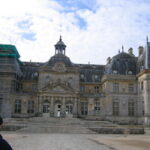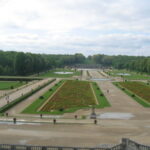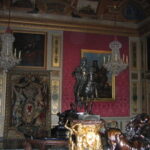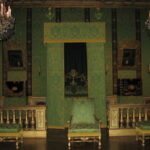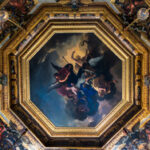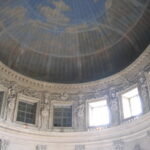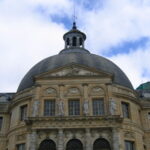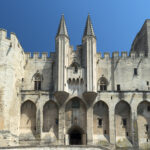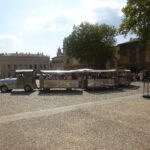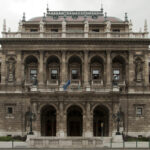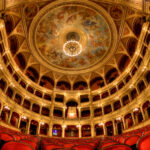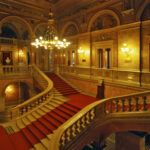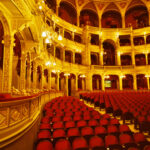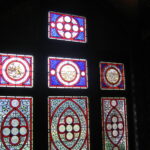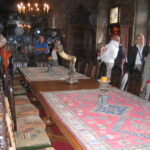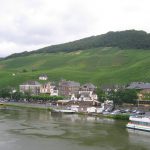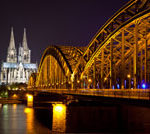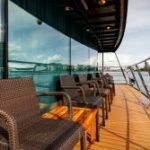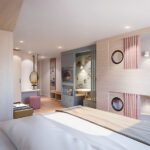Experience the epitome of luxury and grandeur at Chateau Vaux-le-Vicompte, a hidden gem nestled in the picturesque countryside of France. This magnificent chateau, known for its opulence and historical significance, offers visitors a glimpse into the lavish lifestyle of the French elite.
As you step into the enchanting world of Chateau Vaux-le-Vicompte, be prepared to be mesmerized by its stunning architecture, elegant interiors, and meticulously maintained gardens. Marvel at the intricate details and exquisite craftsmanship that went into creating this architectural masterpiece.
Immerse yourself in the captivating history of the chateau, which dates back to the 17th century. Discover the fascinating stories and legends surrounding this majestic estate, from its infamous origin as a gift to King Louis XIV’s disgraced finance minister to its impressive restoration by the current owners.
Whether an architecture enthusiast, history buff, or simply seeking a luxurious escape, Chateau Vaux-le-Vicompte will captivate your senses and transport you to a bygone era. Indulge in a guided tour, explore the extensive gardens, or relish in a romantic candlelit dinner amidst the grandeur of the chateau.
Uncover the secrets of Chateau Vaux-le-Vicompte and revel in the beauty and splendor that await you at this hidden gem in the French countryside.
History and significance of Chateau Vaux-le-Vicompte
The history of Chateau Vaux-le-Vicompte is as captivating as the chateau itself. Built in the 17th century, the chateau was commissioned by Nicolas Fouquet, the Superintendent of Finances for King Louis XIV. Fouquet wanted to create a residence that would showcase his wealth and power, and enlisted the help of renowned architect Louis Le Vau, painter Charles Le Brun, and landscape designer André Le Nôtre.
However, Fouquet’s grand plans for the chateau would ultimately lead to his downfall. When King Louis XIV visited Chateau Vaux-le-Vicompte for a lavish celebration, he was so envious of its magnificence that he accused Fouquet of embezzlement. As a result, Fouquet was arrested and imprisoned, and King Louis XIV seized the chateau for himself.
Despite its tumultuous beginnings, Chateau Vaux-le-Vicompte has since been lovingly restored and maintained by its subsequent owners. Today, the chateau stands as a testament to the resilience and enduring beauty of French architecture.
Architecture and design of the chateau
The architecture of Chateau Vaux-le-Vicompte is a harmonious blend of classical and Baroque styles. Designed by Louis Le Vau, the chateau features a symmetrical layout, with a central dome and two wings stretching outwards.
The exterior of the chateau is adorned with intricate carvings and elegant columns, while the interior is a showcase of opulence and grandeur. Each room is meticulously decorated with ornate plasterwork, gilded moldings, and exquisite furnishings, transporting visitors back in time to the heyday of the French aristocracy.
One of the highlights of the chateau is the grand staircase, which is considered a masterpiece of architectural design. The staircase, with its sweeping curves and intricate details, is a testament to the skill and craftsmanship of the artisans who worked on the chateau.
Gardens and landscape of Chateau Vaux-le-Vicompte
No visit to Chateau Vaux-le-Vicompte is complete without exploring its extensive gardens and landscape. Designed by André Le Nôtre, the gardens are a work of art in themselves, with perfectly manicured lawns, symmetrical flowerbeds, and ornate fountains.
The gardens are divided into different sections, each with its own unique charm. From the formal French gardens with their geometric patterns, to the English gardens with their meandering paths and wildflowers, there is something to delight every visitor.
One of the most breathtaking features of the gardens is the Grand Canal, a large body of water that stretches out in front of the chateau. The reflection of the chateau on the calm waters of the canal creates a stunning visual spectacle.
Notable features and highlights of the chateau
Chateau Vaux-le-Vicompte is filled with notable features and highlights that make it a must-visit destination for architecture and history enthusiasts. Here are some of the standout features of the chateau:
- The Grand Salon – This majestic room is the centerpiece of the chateau, with its high ceilings, elaborate frescoes, and crystal chandeliers. It is the perfect place to imagine the extravagant parties that were once held at the chateau.
- The King’s Bedroom – This room was originally intended for King Louis XIV, but he never stayed at the chateau. The bedroom is adorned with luxurious fabrics, ornate furniture, and a magnificent four-poster bed.
- The Drawing Room – This elegant room is where guests would gather for conversation and entertainment. It features intricate tapestries, beautiful paintings, and comfortable seating areas.
- The Chapel – The chateau’s chapel is a small, but beautifully decorated space. With its stained glass windows, ornate altar, and delicate carvings, it provides a peaceful retreat from the grandeur of the rest of the chateau.
Visitor information and tours
To fully appreciate the splendor of Chateau Vaux-le-Vicompte, it is recommended to take a guided tour. The knowledgeable guides will provide insights into the history, architecture, and design of the chateau, as well as share intriguing stories and anecdotes.
Tours are available in multiple languages, including English, French, and German, ensuring that visitors from around the world can enjoy the chateau’s treasures. It is advisable to book your tour in advance, especially during peak tourist seasons, to secure your spot.
In addition to guided tours, the chateau also offers audio guides that allow visitors to explore at their own pace. These guides provide detailed information about each room and feature, allowing for a more immersive experience.
Events and activities at Chateau Vaux-le-Vicompte
Chateau Vaux-le-Vicompte is not only a historical site, but also a vibrant cultural destination. Throughout the year, the chateau hosts a variety of events and activities that cater to different interests and age groups.
One of the most popular events is the annual Candlelit Night, where the chateau and gardens are illuminated by thousands of candles. This enchanting spectacle creates a magical atmosphere and allows visitors to experience the chateau in a whole new light.
The chateau also hosts concerts, art exhibitions, and theatrical performances, showcasing the diverse talents of artists from around the world. These events provide a unique opportunity to enjoy world-class entertainment in a truly extraordinary setting.
For younger visitors, the chateau offers interactive workshops and educational activities that aim to ignite their curiosity and appreciation for history and architecture. From costume dress-ups to treasure hunts, there is something to engage and entertain children of all ages.
Nearby attractions and destinations
Chateau Vaux-le-Vicompte is ideally located near several other attractions and destinations that are worth exploring. Just a short drive away is the historic town of Fontainebleau, which is home to the stunning Fontainebleau Palace. This UNESCO World Heritage site is renowned for its architectural beauty and rich history.
Another nearby attraction is the charming village of Barbizon, which was a popular destination for artists in the 19th century. Today, the village is known for its art galleries, picturesque streets, and quaint cafes.
For nature lovers, the Fontainebleau Forest is a must-visit. This vast forest offers numerous walking trails, rock climbing opportunities, and picnic spots, allowing visitors to immerse themselves in the beauty of the French countryside.
How to get to Chateau Vaux-le-Vicompte
Chateau Vaux-le-Vicompte is conveniently located just 50 kilometers southeast of Paris, making it easily accessible by car, train, or bus.
If you prefer to drive, the chateau has ample parking facilities available. The journey from Paris takes approximately one hour, depending on traffic conditions.
For those who prefer public transportation, trains from Paris to Verneuil-l’Étang run regularly, with a journey time of around 45 minutes. From Verneuil-l’Étang, you can take a short taxi ride or catch a bus to the chateau.
You can also visit the Chateau from various barge cruises – such as the 6-passenger Meanderer or the 8-passenger deluxe La Nouvelle Etoile cruising Paris and Champagne region or the 22-passenger Deborah cruising Sens to Paris.
For more information, contact us at www.europeanbarging.com / jan@europeanbarging.com or 713-240-6753 / 888-869-7907

